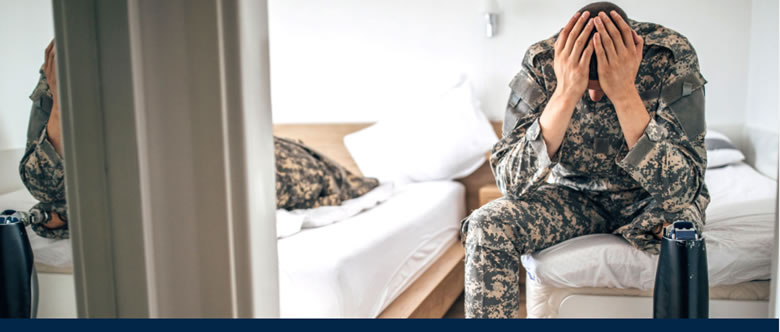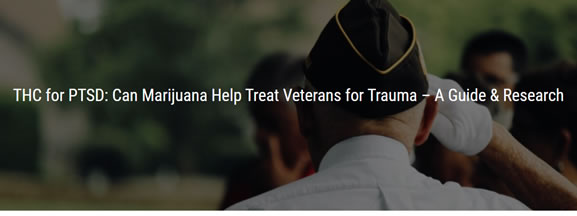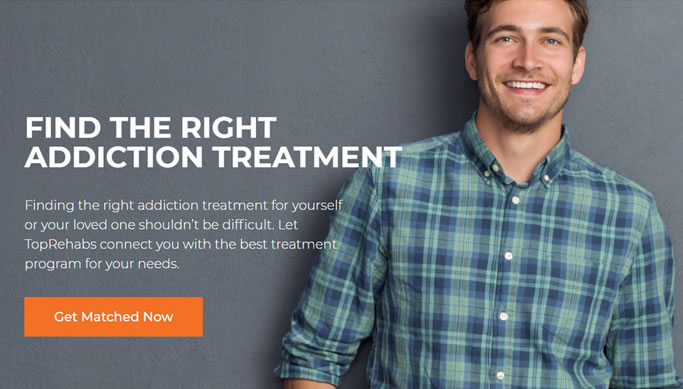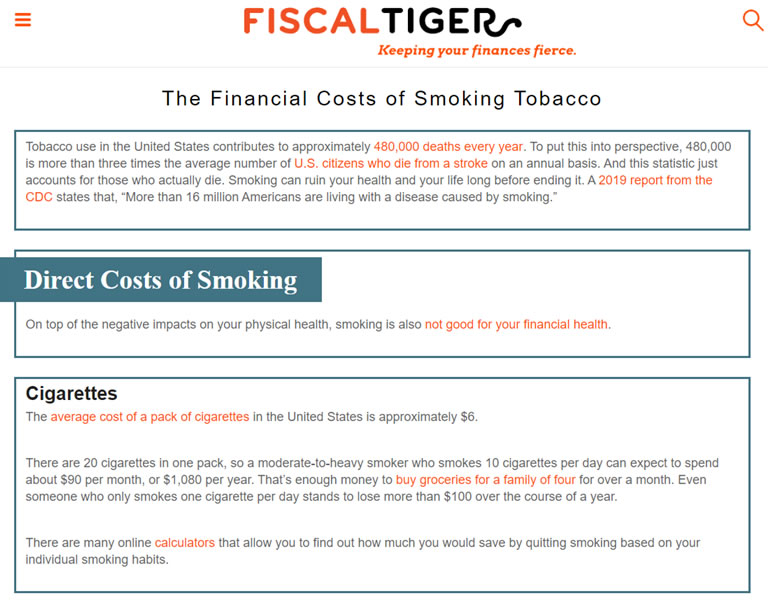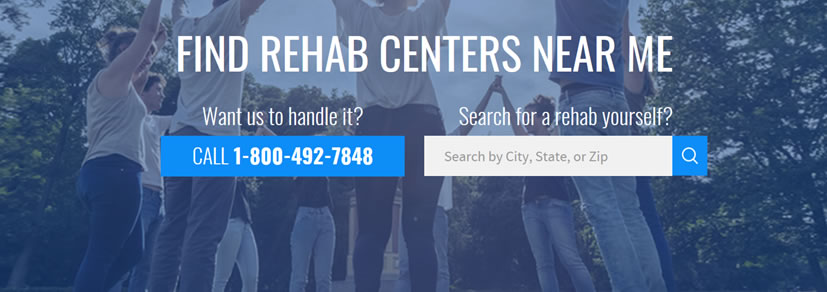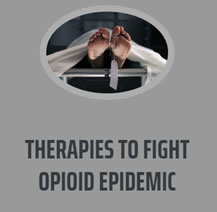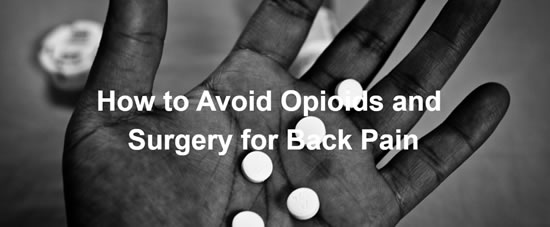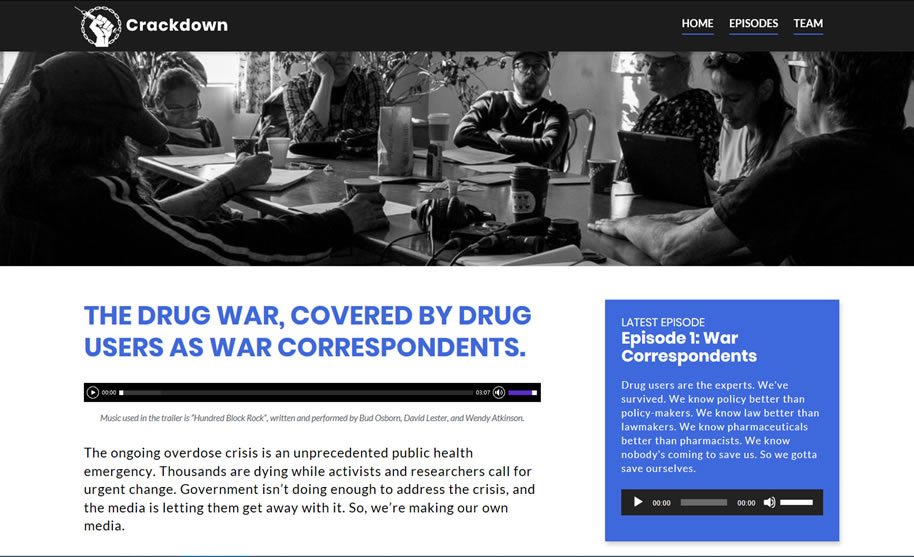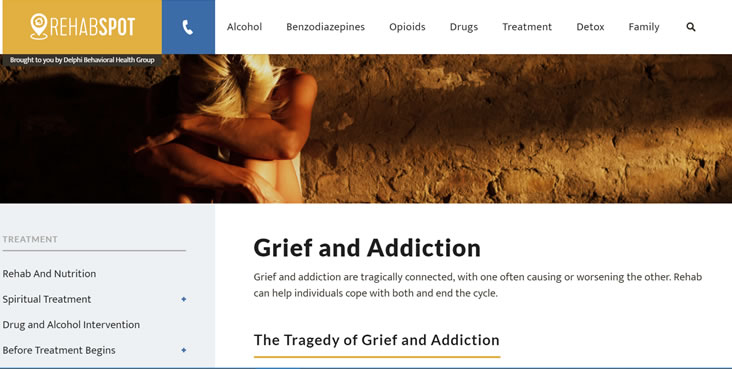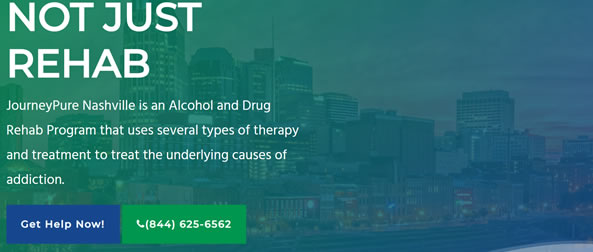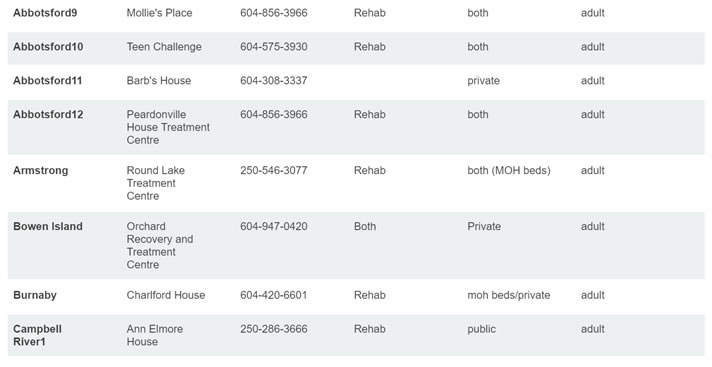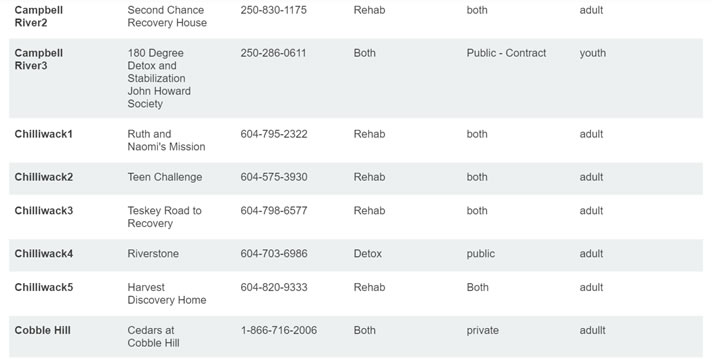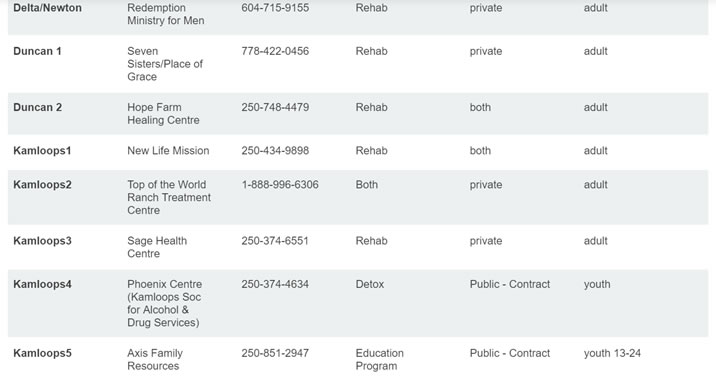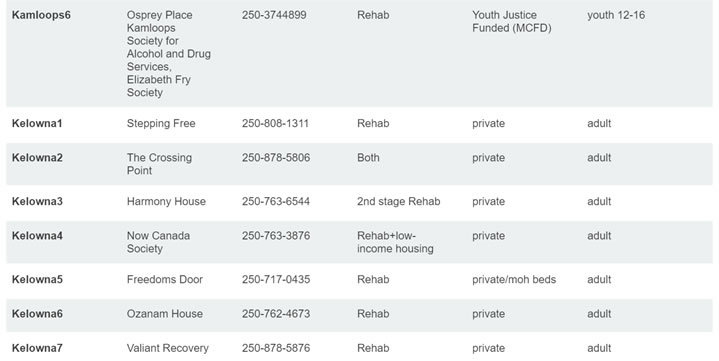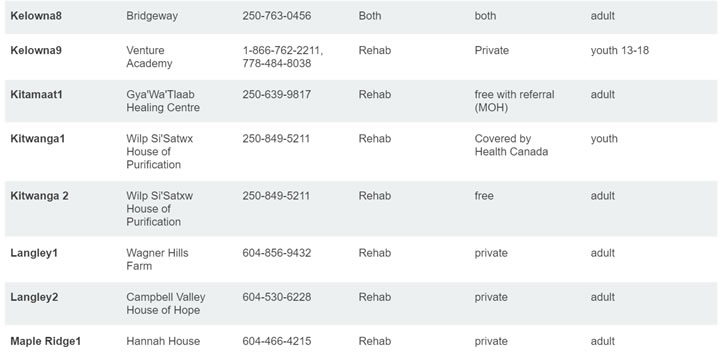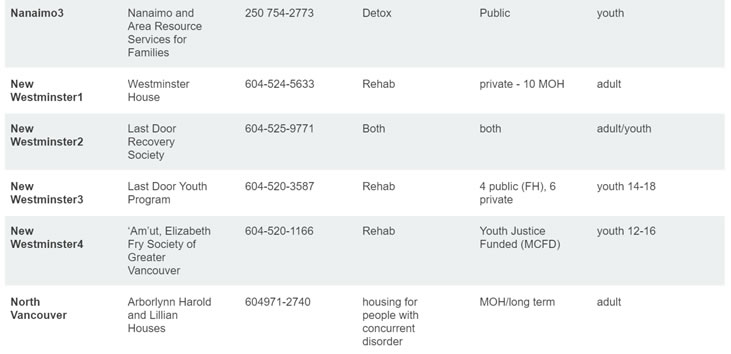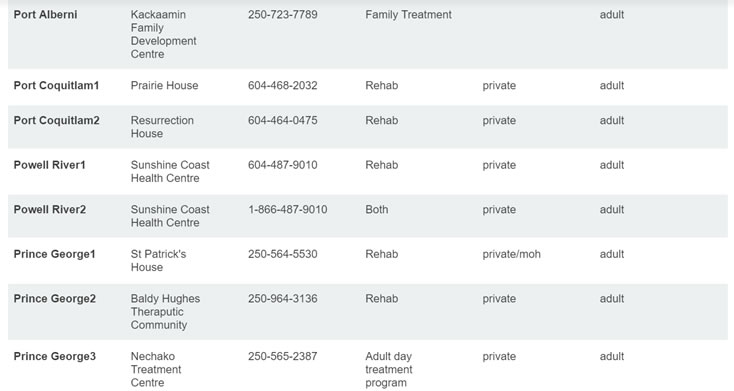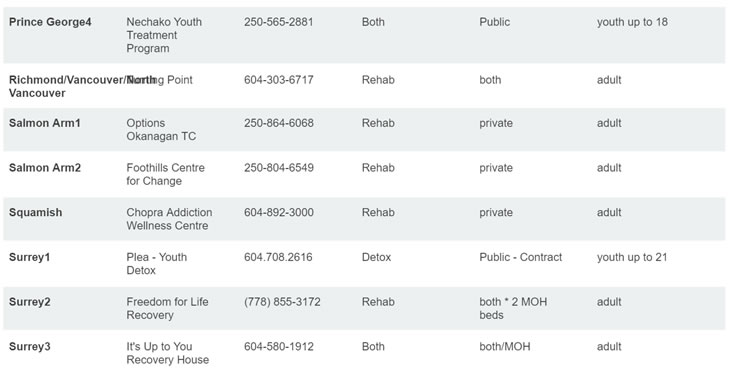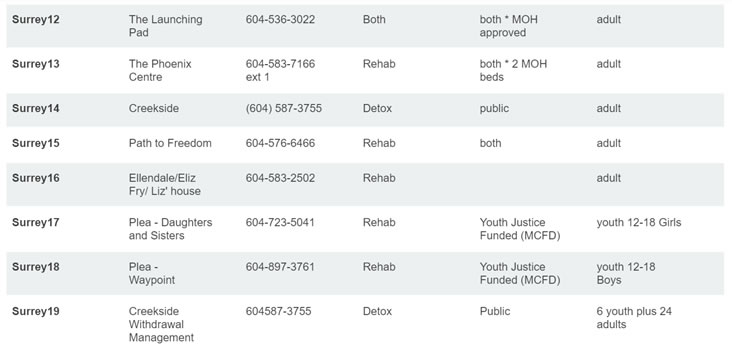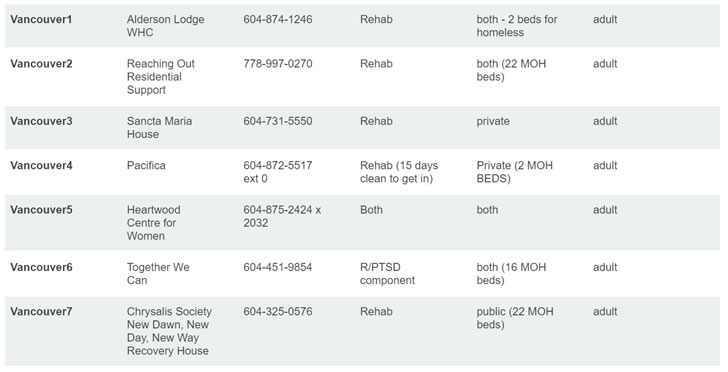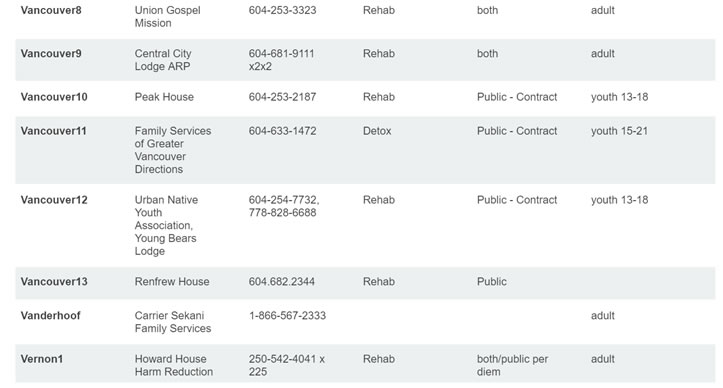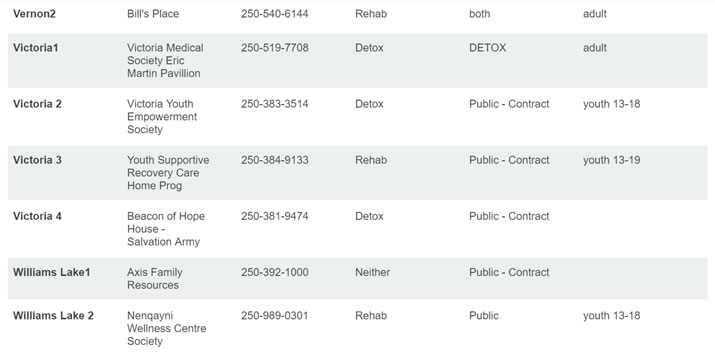   |
Because He Cares |
| ADDICTION STORIES - ADDICTION RECOVERY SEE THESE PERSONAL STORIES FOR THOSE WHO HAVE LOST LOVED ONES |
|||||||||
| SEE ADDICTIONS - Page 1 - 2 - 3 | |||||||||
Types of Therapy for Drug and Alcohol Addiction Written by Jessica White Deciding to look or attend drug and alcohol treatment might be a difficult decision, but ultimately a beneficial and rewarding one. If you are considering this treatment for yourself or exploring it for someone else, you should become familiar with the different treatment options, including therapy for drug addiction. This article will review the kinds of therapies available for those who struggle with drug and alcohol addiction, such as different types of behavioral therapy, motivational interviewing, EMDR, family therapy, and more. However, before we explore the kinds of therapy, it’s important to be aware of the reasons and factors that can contribute to addiction. |
|||||||||
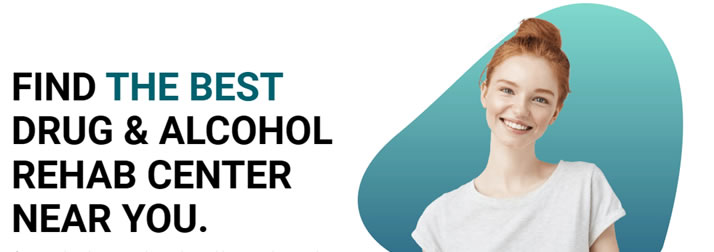 About Us Addiction Resource is an informational content guide serving individuals and their families who struggle with addiction, substance use disorders, and mental health disorders. Striving to provide relevant information related to addiction and addiction treatment, Addiction Resource is owned by the Addiction Resource Media Group. This marketing group has more than fifteen years of combined knowledge in marketing and more than a decade in addiction treatment content creation. What We Do providing up-to-date, accurate, and evidence-based information related to addiction, substance abuse, mental health, and treatment Topics are selected based on research, which tells us which types of treatment our audience may be looking for, which types of addiction individuals across the nation may be facing, and which types of treatment may be most helpful and effective. Articles are written based on fact and checked for accuracy by treatment professionals in the industry. For any information relating to addiction treatment or addiction, we use only government-led, medically reviewed, or university-published sources. Our Mission |
|||||||||
| Interactive Map of Drug Overdose Deaths Drug overdose deaths are an unfortunate reality in the U.S., especially as these numbers continue to grow. While most people don’t intend to overdose, the reality is that everyone who engages in substance abuse is vulnerable. The question of how to prevent overdoses is complex, and is made even more difficult with the rise in synthetic opioids, poly-drug use, and medical prescriptions. PLEASE VIEW ALL MAP DETAILS ON THE WEBSITE |
|||||||||
VETERAN SUBSTANCE ABUSE |
|||||||||
Coronavirus and Substance Use: Risks of Going Untreated COVID-19 (the coronavirus) has been in the news and top of mind over the last week. Although the coronavirus is a severe public health concern, the disease of addiction is also a serious and challenging one to battle. Couple this with a co-occurring mental health disorder, and it can feel overwhelming. However, this is a battle that can be won with a supportive team. Updates about COVID-19 are evolving continually, which causes changes to protocols, recommendations, and policies for healthcare professionals. We at American Addiction Centers (AAC) are monitoring daily and are updating our procedures and policies as necessary in line with guidance from the CDC (Center of Disease Control and Protection), WHO (World Health Organization), as well as federal and state authorities. We are committed to supporting our patients and their families who suffer from and are directly impacted by the disease of addiction. |
|||||||||
 We Ask an Expert About the Common Causes of PTSD Dr. Merchant’s Experience After listening to his experiences and insights, it’s apparent that Dr. Merchant has some super-helpful knowledge and understanding to share from a medical standpoint. When Aspen jumped right in with causes of PTSD questions, he offered some real and raw answers. |
|||||||||
Welcome to Louisiana Medical Marijuana Doctors Over the years, marijuana at certain potency levels, has proven to be an effective resource in the successful management of a wide array of serious conditions, including but not limited to: Alzheimer’s and Memory Loss Data from the United States Department of Veterans Affairs (VA) indicates that rates of PTSD among retired veterans are approximately: 20 percent for those who have served in Operations Iraqi Freedom (OIF) and Enduring Freedom (OEF) PLEASE VIEW WEBSITE FOR MORE INFORMATION |
|||||||||
 As theopioid crisis ravaged the country, mainstream American became more aware of the dangers posed by certain painkillers. However, there’s another epidemic that doesn’t grab too many headlines. Instead, this public health crisis is documented in two recent studies. One tracked the drinking habits of 40,000 Americans between 2002 and 2003 and again between 2012 and 2013 reflected an alarming trend in alcohol use. Based on extrapolated data, the JAMA Psychiatry study found that “alcohol use disorders” increased drastically, and that approximately one in eight Americans battle an alcohol use disorder. Then a different study found that nearly 17 million Americans grapple with some aspect of alcohol addiction. That study also found that alcoholism takes a staggering toll on the American economy, costing industry roughly $186 billion per year based on: lost productivity; damages caused by alcoholic employees; and potential liability for any acts perpetrated by such employees that result in workplace injuries. While the Americans with Disabilities Act (ADA) and the Family and Medical Leave Act (FMLA) both afford some protection to American workers struggling with alcoholism, it is not absolute. PLEASE SEE MUCH MORE ON WEBSITE |
|||||||||
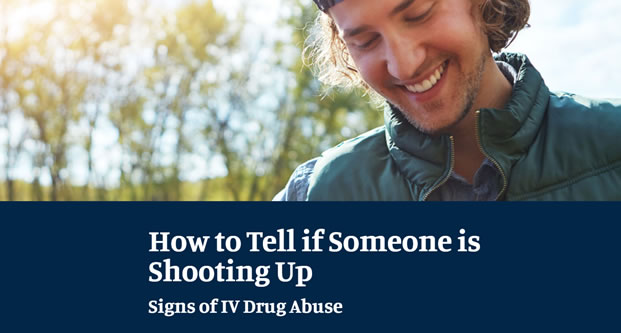 Introduction People who use IV drugs feel and act the same way through highs and lows. Some prefer injecting drugs to smoking or snorting substances because injecting produces a faster reaction. As the drugs go directly into the bloodstream, users feel the high much faster. The injection method can also produce a faster crash period because as the drugs leave, their pleasurable symptoms dissipate quickly too. Some of the signs you might notice during the crash period, also known as the cooling period, include: Trouble concentrating or thinking |
|||||||||
 Contingency Management Helps Veterans Stay Drug-Free The Contingency Management Program is Funded by the Veterans Canteen Service (VCS) Why Some People Do Not Use Contingency Management |
|||||||||
 Blood alcohol content, or BAC, is a term that refers to the percentage of alcohol found in a person’s blood stream, and it can be measured within 30 minutes to an hour after that individual starts drinking. Contrary to popular belief, there’s no shortcut to sobering up—time is the only reliable option. As such, water, coffee, and cold showers won’t reverse the effects of alcohol in your system. DUI laws make it vital for anyone drinking outside of their home to be aware of their blood alcohol content before hopping in the car. While everyone metabolizes alcohol differently, blood alcohol content calculators serve as a way to estimate how much you’ve had to drink. But, it’s important to note that while calculators can help you check in with yourself, they are not a completely reliable tool for determining whether it’s safe to drive or appropriate to work after drinking. In this article, we’ll discuss what a BAC calculator is for, factors that influence BAC, and how BAC calculators may help you avoid DUIs—and the consequences that come with that offense. XXXXXXXXXXXXXXXXXXXXXXXXXX
How is BAC Determined? Blood Alcohol Content Concentration and Alcohol Impairment PLEASE SEE COMPLETE DETAILS ON WEBSITE |
|||||||||
 Addiction has always been known to run in the family, a fact now supported by decades of rigorous observational research. For centuries, the trend was chalked up to the consequences of upbringing, class, or race. In 1967, two researchers selectively bred rats depending on their affinity to morphine addiction. They were able to predict a rat’s proclivity for opioid abuse, given the trait in the parents, regardless of environmental factors. Researchers further discovered that the rats at risk for morphine addiction also had a higher chance of developing alcoholism. These scientists concluded that there was at least one genetic factor contributing to addiction. Addiction: Nature versus nurture Whether it’s caffeine or heroin, some similarities underlie all types of addiction. At the very least, we’re aware that addiction usually involves the ‘reward pathways’ in the brain – a dopamine-fueled system that dictates our motivations. Some compounds – like cocaine – act on this network itself. Many recreational drugs either increase dopamine production or limit its reuptake. On top of that, how our bodies metabolize drugs and toxins plays a significant role in the way we react to the substance. In the case of alcohol, it is converted into a toxic by-product that is best characterized by the hangover it causes. This metabolite changes into a harmless compound that can be used by the body or disposed of. Therefore, the speed and efficiency of both these steps can significantly affect your relationship with alcohol. Addiction and genetics This phenomenon is due to deficiencies in the genes related to alcohol metabolism. It is also the only addiction-related variant assessed in 23andMe’s Wellness panel. This has an indirect association with the risk of alcohol abuse. Other genetic mutations have demonstrated a much more pervasive impact. A shocking example implicates a gene associated with dopamine activity in the brain. An ancient fragment of viral DNA can be found in a certain ‘unused’ part of the RASGRF2 gene, passed down through the generations. Furthermore, this genetic ‘infection’ is associated with a higher risk of intravenous drug use, a hallmark of significant addiction. This demonstrates the power of dopamine in substance abuse disorders. It also indicates how easily the balance of this neurotransmitter can be disturbed. |
|||||||||
Your Happy, Fulfilled Life Is Our Goal |
|||||||||
Cigars, Little Cigars, and Cigarillos Health Care Costs of Smoking Increased Risk of Chronic Illness Medical Procedure Costs Other Physical Costs of Smoking Life, Health, and Critical Illness Insurance AND MUCH MORE INFORMATION ON WEBSITE |
|||||||||
 My name is Courtney, I’m part of the Community Outreach team for Florin|Roebig, a firm focused on those that have been victimized or taken advantage of. Most of our clients are not able to afford lawyers so we provide all of these services for free. Because of our passion for community involvement, we've created these guides to share information about nationwide problems and possible legal action. Late 2019, FDA released a statement alerting patients and healthcare providers of a safety concern regarding the drug, ranitidine, commonly bought under the brand name, Zantac. The test findings demonstrating toxic levels of a carcinogenic ingredient known as NDMA. Personal injury lawsuits claim these drug makers marketed and sold drugs contaminated with toxic amounts of NDMA, without disclosing the health risks, such as cancer-causing effects, to the government or the public. Because of this, people across the US have joined lawsuits against Zantac. Consumers and their loved ones are understandably concerned about the recent statements. It's important to make this information much more accessible than it's been in the past. In this guide, https://florinroebig.com/dangerous-drugs/zantac/, we touch on points such as: |
|||||||||
| More than Emotional Support How Support Animals Improve Recovery from Substance Use Disorders  Why does Laguna Shores Recovery make your support animal an important part of your recovery? Because studies show that a brief visit with your pet can reduce the underlying causes of addict What other benefits does a support animal provide in your recovery? 1.Caring for the pet keeps you busy, allowing less time for temptation. 2.The pet can keep you physically active. 3.Caring for the pet can decrease your isolation and provide positive social interaction. 4.And many more benefits! Table of Contents Benefit of Pets History Types of Animal Therapies Therapy Animals Animal Therapy for Addiction Ways Animals Help Recovery Service Animals in Rehab Equine Therapy Animal Assisted Therapy Finding a Support Animal Is It Right for You? SEE FULL DETAILS ON WEBSITE |
|||||||||
How to Pay for Addiction Treatment If you or a loved one has faced addiction, you’re not alone. One in seven Americans will face substance addiction in their lives, according to USA Today. However, only 10% of those people will ever receive treatment. Addiction is caused by a variety of factors, including genetics, psychological problems, the type of drug, and trauma, among other things. It can build slowly over time and become a chemical craving for the substance. One of the major barriers to treatment is cost. According to recovery.org, inpatient treatment can cost between $2,000 and $25,000 for a 30-day program. Outpatient treatment can range from free to $10,000, and detox can range from $300 to $800 a day. Given the high cost of treatment, the idea of paying for rehab can seem overwhelming, but it doesn’t have to be. The cost of not addressing addiction is also high. There’s the money required to pay for the substances, along with the incalculable toll addiction takes on one’s body and interpersonal relationships. |
|||||||||
Sleep Shelters for Homeless  Are you at risk of becoming homeless? Is your housing secure? If you lost your job tomorrow or were injured in an accident and unable to work for a few months, would you become homeless? Or are you already in a tenuous predicament, living in an informal situation without a lease? Homeless numbers have risen but the number of individuals and families who are housing insecure has grown even faster. Who is Homeless? Facing Homelessness? Homeless vs Housing Insecurity Domestic Violence and Homelessness Homeless Shelter Rules and Services People who May Experience Greater Difficulty Finding Shelter Nationwide Assistance State-by-State Statistics and High-Level Resources Unseen Avoidable Costs of Homelessness Health Risks in Shelters Prevention is Better than Cures Conclusion VIEW ALL OF THE ABOVE INFORMATION ON THE WEBSITE |
|||||||||
 Substance abuse: Unpacking a Public Health Crisis In November 2016, a report by U.S. Surgeon General Dr. Vivek Murthy detailed a growing concern over the health implications of drug and alcohol addiction. Facing Addiction in America: The Surgeon General’s Report on Alcohol, Drugs, and Health examines the pathology and classification of substance misuse painting a picture of a crisis that is taking a heavy toll on the nation, both financially and socially. “Most Americans know someone who has been touched by an alcohol or a drug use disorder,” Murthy told the National Institute on Alcohol Abuse and Alcoholism. “Yet 90 percent of people with a substance use disorder are not getting treatment. That has to change.” For public health experts, the crisis is likely to impact policy and treatment strategies for years to come. With the prompt from Murthy shaping the discourse, public health officials must seek effective means of treatment and prevention that harness the data we have available, while still navigating cultural conceptions — and misconceptions — about substance abuse. The diversity of misuse The broadness of this approach is a double-edged sword for public health officials: On the one hand, the diversity of research analyzed by the surgeon general provides a strong baseline for future insight. On the other hand, it creates a challenge for public health officials to know where to start. The picture of substance abuse detailed by the surgeon general is one of nearly epidemic proportion: In 2015, almost 48 million Americans used an illicit drug or misused a prescription medication. About 67 million also reported binge drinking in the last month — defined by the Centers for Disease Control and Prevention as a sustained pattern of drinking that brings a person’s blood alcohol concentration to 0.08 percent or over, and nearly 28 million people self-reported driving under the influence in the past year. “Substance misuse is a major public health challenge and a priority for our nation to address,” wrote U.S. Department of Health and Human Services Secretary Sylvia Burwell in the report’s executive summary. “The effects of substance use are cumulative and costly for our society, placing burdens on workplaces, the health care system, families, states and communities.” |
|||||||||
 Many students think that finding a good well-paid job is the real challenge and it is indeed true considering a 37% unemployment rate among the civilian noninstitutional population of 16 years and older. However, students with disabilities are the ones who face even more obstacles as barely 20% of them mentioned that they are employed, according to the 2018 annual survey by the Bureau of Labor Statistics. Though all these numbers should show to students is that there are multiple opportunities that are not yet used for their benefit and this article intends to reveal some of them. Problems that students with disabilities face in search of a career Another problem that forms the background for the above-mentioned ones is the lack of resources and available options. It might be the lack of specific career counseling services or centers for people with disabilities in both the college or the entire city. Local employers might have limited options available for students with disabilities. Problems that are the consequences of all stated issues include the absence of required experience and skills: lack of specific job-related skills, limited teamwork ability, and lack of communication skills. All these aspects result in an insufficient resume that, consequently, makes a student even more afraid of seeking new opportunities than before. That is why it is crucial to realize all the negative effects of this vicious circle and do not be afraid of making small steps towards the goal, even if they do not appear to be effective at first sight. |
|||||||||
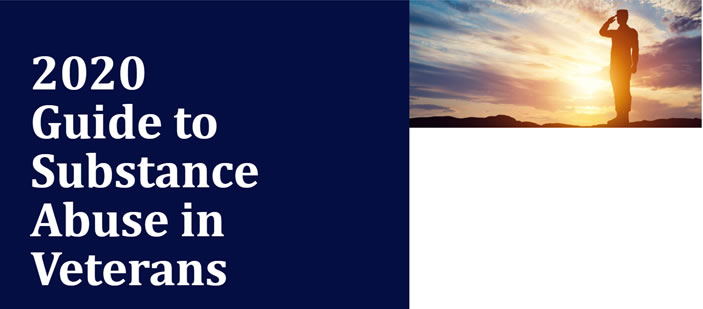 Table of Contents Overview Veterans Substance Abuse Statistics Signs of a Substance Abuse Disorder When Is It Time to Get Help? Common Causes in Veterans Long-Term Risks for Substance Abuse PTSD and Substance Abuse Substance Abuse in Female Veterans Addiction Treatment for Veterans Detox for Veterans Traditional Therapies How to Find Help Help for Veterans with Substance Abuse PLEASE VIEW ALL OF THE ABOVE CONTENT ON WEBSITE |
|||||||||
Alcohol-Related Medical Conditions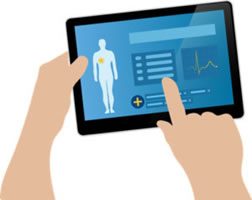 People who abuse alcohol often do so to escape the troubles of their lives. Whether they’re facing financial, emotional, or physical troubles alcohol often numbs them to their worries which is ironic because alcohol abuse is often the root cause of many of their problems. The more alcohol is abused the worst problems often become. Soon relationships are broken, finances are ruined, careers are flushed down the drain, and (usually worst of all), life-threatening health conditions begin to arise. Alcohol abuse has been the root cause of well over 60 diseases that range from minor to life-threatening. With that being said, let’s take a look at some of the most common medical conditions that come about from alcohol abuse. PLEASE SEE WEBSITE FOR FULL DETAILS AND SUBJECTS SUCH AS: Brain Damage Alcohol poisoning Hepatitis and other types of liver diseases Sexually-Transmitted Diseases (STDs) Severe Bodily Injury Combating alcohol abuse |
|||||||||
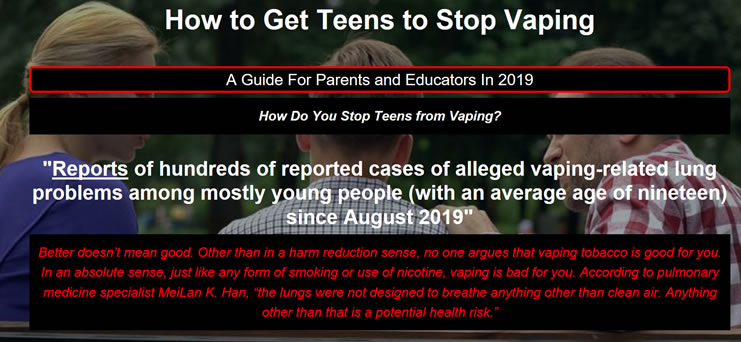 Since e-cigarettes were introduced to the United States in 2007, vaping has been touted as a safer alternative to smoking cigarettes, even by anti-smoking advocates. The inventor of the first commercially successful e-cigarette claims he was motivated by his father’s death from lung cancer. That doesn’t mean that vaping is harm-free. There are too many factors and not enough research. |
|||||||||
 COMPLETE GUIDE 2019: Muscle Dysmorphia and Steroid Abuse Prevention Among Young Males in High School and Universities MD was once labeled “reverse anorexia” in previous editions of the DSM, but was reclassified in 1993. It is still sometimes referred to as “bigorexia”. Muscle dysmorphia is similar to other types of body dysmorphic disorder in its manifestation through negative body image and the obsessive of some (in this case muscle size); however, symptoms are often more intense, and often include an even stronger avoidance of social activities and interaction. Recent data from the body dysmorphia education and advocacy organization Mirror-Mirror indicates that approximately 10 percent of bodybuilders suffer from BDD, but that it also affects between one and three percent of males. One of the more malignant and dysfunctional means through which muscle dysmorphia sufferers is through the excessive use of steroids to build muscle. According to data from the National Institute on Drug Abuse (NIDA), steroid misuse is associated with muscle dysmorphia, a behavioral disorder in which men think that they look small and weak, even if they are large and muscular. The reality is that younger males experience a unique and distinct set of cultural circumstances and expectations that render them psychologically vulnerable to these conditions. Understanding the relationship between these two conditions, their impact on health and quality of life and how to treat them is key to improving care outcomes. |
|||||||||
 The Distinction between Binge Drinking and Alcoholism Most people know that alcohol issues develop when people lose control over how much or how eagerly they drink. That lack of control defines and outlines an alcohol disorder. But there can be subtle distinctions between problems relating to alcohol. For example, there are differences in habits and dangers among people who binge drink and people who have alcoholism. This article will outline and define what makes these two alcohol use disorders different from one another. Binge Drinking Defined Alcoholism Defined Binge Drinking Risks Alcoholism Risks Binge Drinking Treatment Alcoholism Treatment Why Accurate Diagnosis Matters SEE COMPLETE DETAILS ON WEBSITE |
|||||||||
Substance Abuse Treatment Plans: 4 Things You Need to Know |
|||||||||
 Anxiety in College by the Numbers College is a time of major changes, so it’s no wonder it is also a time when many students experience anxiety. When you know what you’re dealing with, know how to cope and can find the right help, you can manage anxiety. A survey that asked college counselors about anxiety issues found that anxiety is the top issue for college students (41.6 %). About 25% of college students were taking medications to treat mental health issues. Another study done by Penn State found that more than 60% of college students report anxiety as one of their major health concerns. College students struggling with anxiety cuts across all sexes and races. One study found that the rates of anxiety disorders reported by US college students doubled from 2008 to 2016. During this time, the rates for anxiety disorders rose by 65% for transgender students, 67% for male students, and 92% for female students. Table of Contents Anxiety by the Numbers Anxiety vs. Stress Symptoms Things to Avoid How to Fight Anxiety Signs You May Need Help Anxiety and Substance Abuse Finding Help Additional Anxiety Support Online Resources SEE FULL WEBSITE FOR DETAILS |
|||||||||
|
|||||||||
 Mother-Fetus Connection The profound connection between mother and fetus is deeper than most think. While mother and child don’t share blood, the placenta provides a connection between the two, allowing for the exchange of nutrients, wastes, and gasses. The placental wall acts as a barrier, albeit an extremely porous one. Substances consumed by the mother permeate the placental wall and enter the fetus’ circulation, providing nutrients from food the mother eats, liquids she consumes, and air she breathes. But the shared substances don’t stop at what is necessary for the fetus’ growth and survival. Alcohol and drugs – both prescription and illicit – are also able to permeate the placenta, often causing congenital disabilities, behavioral changes, and even death. Women comprise 40 percent of those with lifetime drug use disorders. Additionally, the risk of developing such disorders increases during reproductive years, putting women who are pregnant or soon to become pregnant at an increased risk for substance abuse. The Diagnostic and Statistical Manual of Mental Disorders, Fifth Edition (DSM-V) defines substance use disorder as the impulsive use of substances despite negative consequences. It is diagnosed by the presence of 11 different criteria. While a disorder can range from mild to severe, any use of substances can negatively impact both mother and child. SEE MUCH MORE ON WEBSITE |
|||||||||
 Addiction Treatment and Recovery Guide for Disabled People Addictions are intensifiers. If you have a physical disability, an addiction can worsen your discomfort and increase your limitations. Addictions and physical illness can also intertwine. Addressing just one problem allows the other to worsen. Addictions complicated by physical limitations can be treated. They must be addressed at the same time, and your doctor must take your history into account when developing your recovery plan. SEE WEBSITE FOR COMPLETE GUIDE The Recovery Village 633 Umatilla Blvd. Umatilla, FL 32784 (844) 306-7082 www.therecoveryvillage.com |
|||||||||
Recovery Village |
|||||||||
 Addictive drugs and substances are everywhere in our society. Some have been around for decades or even centuries, while others have just cropped up in recent years. |
|||||||||
 Addiction has many faces and lives all around us. It does not discriminate, does not have any discretion with regards to which neighborhood it is found in, and doesn’t care how much money you have. It is not concerned with what kind of job you have or how much education you received. Whether you are addicted to drugs or alcohol, once you notice the need for that substance becoming your primary focus, it has already taken over. Recognizing the signs of addiction is a critical first step in getting help for yourself or a loved one. This can be a difficult task because addiction has so many different ways in which it can manifest. No two addictions are ever quite the same; however, most do have certain noticeable signs and symptoms. Once you have identified the presence of substance abuse, you are then able to seek treatment. The good news is that there is help available. All you have to do is ask. To help you navigate through this article and find the information you need, click on any of the topics listed below to skip directly to that section: |
|||||||||
 160 detox and rehab beds across the UK, treatment for all addictions including alcoholism, all drug addictions and eating disorders. Spanning from luxurious rehabs with en-suite rooms, gyms and on-site medical nursing units to low-cost clinics. Catering for all people from all walks of life. All our rehabs have 24/7 on-site specialist addiction professionals ensuring the patient will have the highest level of care offered in the country. UKAT always addresses the individual as a whole and will tailor treatment to the addiction and long-term recovery of the patient. All UKAT centres have a family programme dedicated to helping family members PLEASE FIND MUCH MORE ON WEBSITE |
|||||||||
 OVERVIEW Mental illness covers a wide spectrum of conditions that affect children, teens, and adults. Almost one in five U.S. adults are diagnosed with a mental illness. Mental illness can be broadly separated into two categories: any mental illness and serious mental illness. Any mental illness covers all mental illnesses that have been recognized to date, whether that’s occasional depression or another behavioral, emotional, or mental condition that causes upset but can be dealt with without extreme intervention. Serious mental illness encompasses conditions that are more severe, including severe versions of things such as depression. These are behavioral, emotional, or mental conditions that cause serious functional impairment, interfering with one or more major life activities. VIEW WEBSITE FOR COMPLETE DETAILS |
|||||||||
 - LOCATED IN UNITED KINDOM - LOCATED IN UNITED KINDOM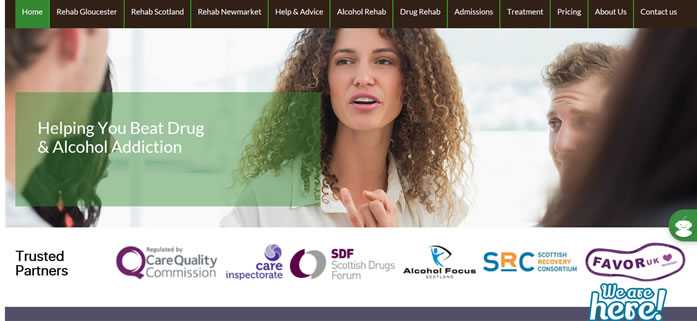 Established for over 15 years, the Abbeycare Group provides treatment for those suffering with alcohol and drug addictions with proven outcomes. Abbeycare Group are residential addiction treatment clinics situated throughout the UK. With rehab clinics in Scotland, between Glasgow and Edinburgh, in Newmarket less than an hour from London and our flagship clinic in Gloucestershire, we treat people suffering with alcohol and drug addiction and the problems associated with substance dependence and misuse and have a proven track record. FOR COMPLETE DETAILS SEE ABBEYCARE FOUNDATION |
|||||||||
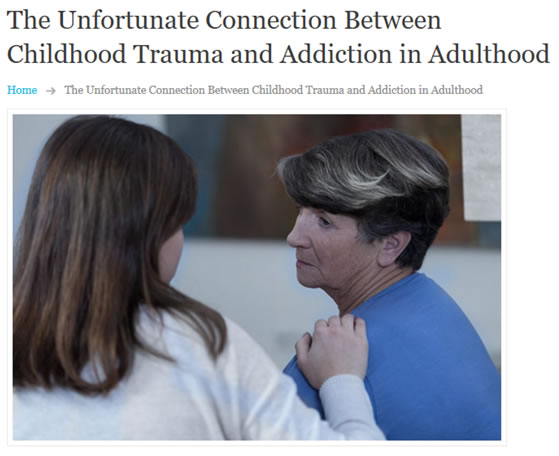 The ongoing accumulation of addiction research offers a more thorough understanding of addiction. However, while we know more now than ever before, we continue to look for answers, particularly when it comes to addiction development and susceptibility. Studies have approached the search for variables that could be responsible for the development of addiction from many different angles. The hope is to find connections or causal relationships between the disease and an individual’s social, experiential or biological circumstances. Since a child’s circumstances and experiences shape his or her physical and psychological development, it follows that researchers would begin looking at the role that childhood experience might play in becoming an addict. Neurological Anomalies in Victims of Childhood Maltreatment The relationship between childhood trauma and susceptibility to addiction can be best understood when one knows how experience influences the brain’s development. Although none can deny the importance of biology and genetics in the brain’s development, the human brain has the innate ability to respond and adapt to environmental stimulation, which is called plasticity.1 As the brain begins growing and maturing during childhood, it creates, strengthens, and occasionally discards neural connections, which compose a network between neurons that imbue the brain with its many functions. One’s experiences affect brain development in a similar manner as learning to speak or walk, causing certain synapses, or connections between neurons, to develop, grow stronger or break. In short, the growth of the brain and its eventual physical structure are significantly affected by one’s experiences, both the positive and the negative. And while experience often leads to the brain developing in ways that are beneficial, experience can also be negative, which can impede or otherwise alter the brain’s development. Specifically, the negative experience of childhood maltreatment is believed to be behind certain anomalies in brain structure that result in cognitive, behavioral and social impairments.2 Upon an assessment of individuals who had experienced childhood maltreatment, a study found that being mistreated during childhood caused frequent and extremely high levels of stress that impeded normal brain development. Continuous stress from experiencing frequent maltreatment initiated physiological stress responses that, over time, caused the structural disruptions that were observed in neurological scans and which are likely making victims of childhood trauma vulnerable to substance abuse disorders PLEASE SEE WEBSITE FOR FULL DETAILS Confidential Call: 844-768-0121 |
|||||||||
Organizational psychology is one of the fastest-growing career pathways within the psychology industry.
|
|||||||||
|
|||||||||
 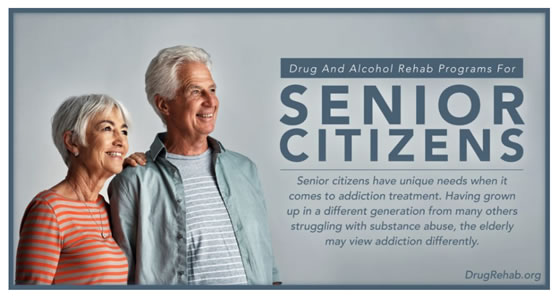 Senior citizens have unique needs when it comes to addiction treatment. Having grown up in a different generation from many others struggling with substance abuse, the elderly may view addiction differently. It is important that a drug rehab program covers issues that are relevant to the older generation, and this may be done most effectively through age-specific treatment. Addiction And Mental Health Concerns For Senior Citizens |
|||||||||
 Our Mission At Alcohol Addiction Center, our mission is to provide information and resources for anyone struggling with an alcohol problem, either through a friend or family member, or with a problem of their own. We are not a facility. Each situation is unique, and we strive to educate and inform people about alcoholism, or known by its clinical name, alcohol use disorder. PLEASE VIEW WEBSITE FOR COMPLETE DETAILS |
|||||||||
Understanding the Opioid Epidemic An overview of how the opioid epidemic is impacting the U.S., along with information and resources for those seeking to understand the signs and effects of opioid use. Our guide includes definitions, statistics, and resources about current research and legislation seeking to help prevent opioid abuse The opioid epidemic is essentially the rising tide of opioid abuse in America. When opioid abuse becomes serious and frequent, it can lead to addiction and death. Opioids have become widely available, either via prescription or the black market, and this increasing availability is contributing to an escalation in the number of people who become addicted. Users are finding it easy to access opioids that are very potent and therefore quite dangerous. High-potency opioids are some of the most, if not the most, addictive drugs in the world. They are flooding the market and people are overdosing on them at record levels. Psychologists are on the frontlines of the crisis as they strive to help addicts recover and rebuild their lives. Psychologists also help families and individuals who struggle when their loved ones become addicted to opioids, and bachelor’s degree candidates in psychology are learning how opioids interact with the human brain in order to better understand how to intervene. This article examines the opioid epidemic in detail and addresses the psychological underpinnings of the crisis. Here, you’ll discover the scope of the epidemic, the root of it, the psychology and physicality of opioid abuse, what to look for to spot someone who is using, as well as possible solutions. PLEASE VIEW COMPLETE OVERVIEW OF THE OPIOID EPIDEMIC ON WEBSITE |
|||||||||
How Healthcare Administrators Are Tackling the Binge Drinking Epidemic A thorough overview of the difference between alcohol abuse and binge drinking, including the individual and public hazards of both, especially drunk driving. It provides current research and statistics regarding how healthcare professionals are actively treating this tragic issue in our society, as well as how individuals can work together to help prevent binge-drinking and support recovery for themselves and each other. Binge Drinking vs Alcoholism Alcoholism is associated with a daily dependency on alcohol. It is a clinical disease that many functioning members of society are dealing with and can be treated. Binge drinking may be more episodic, or portray a sense of being “in control” compared to some of the symptoms associated with alcoholism. A study by the National Institute on Alcohol Abuse and Alcoholism found that “nearly 20 percent of alcoholics are highly functional and well-educated with good incomes.” While binge drinking and alcoholism may be related, it is essential to make the distinction between the two to understand the health risks. Knowing the underlying causes, frequency, and risks involved with these alcohol abuse behaviors can also shed light on how to treat them. PLEASE VIEW WEBSITE ON BINGE DRINKING EPIDEMIC |
|||||||||
|
|||||||||
College Substance Abuse Statistics, Facts, & Recovery – The Complete Guide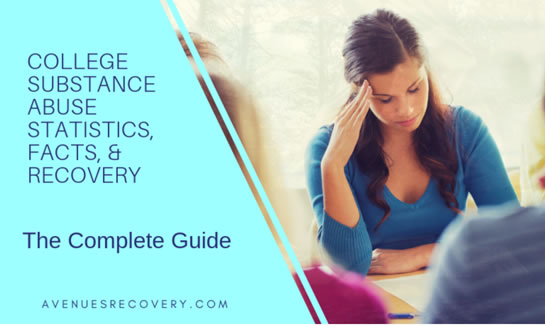 College is supposed to be a time of learning, but also adventures and new experiences. For many young people, it’s the first time they’re on their own, and without the structure of their childhood home and family life, they may experiment. Unfortunately, that experimentation can lead to not-so-healthy habits including the use of substances, and unhealthy drinking patterns. While it can be alarming to hear, the reality is substance abuse and binge drinking are significant problems on college campuses around the country. You’ll often hear news stories about college students unintentionally dying because of alcohol poisoning, drug overdoses, or doing things that are dangerous while under the influence including driving. Too often red flags of substance abuse are seen as typical college kid behavior. Brushing possible substance abuse issues under the rug can lead to short- and long-term consequences that may be difficult to escape from, ranging from full-blown addiction to academic and legal consequences. SEE MUCH MORE ON "AVENUES RECOVERY" WEBSITE |
|||||||||
What Are Opioids?
|
|||||||||
Users are finding it easy to access opioids that are very potent and therefore quite dangerous. High-potency opioids are some of the most, if not the most, addictive drugs in the world. They are flooding the market and people are overdosing on them at record levels. Psychologists are on the frontlines of the crisis as they strive to help addicts recover and rebuild their lives. Psychologists also help families and individuals who struggle when their loved ones become addicted to opioids, and bachelor’s degree candidates in psychology are learning how opioids interact with the human brain in order to better understand how to intervene. This article examines the opioid epidemic in detail and addresses the psychological underpinnings of the crisis. Here, you’ll discover the scope of the epidemic, the root of it, the psychology and physicality of opioid abuse, what to look for to spot someone who is using, as well as possible solutions. What Are Opioids? When drug manufacturers further refine and concentrate opiates, or synthesize them, they create opioids. Opiates and opioids bind to receptors in the brain, causing the receptors to release signals that block pain. Since one of these receptors, the mu-opioid receptor, triggers reward systems in the brain, opioids are highly addictive. |
|||||||||
How to Spot the Warning Signs of Addiction in Teenagers Teenagers are susceptible to dangerous mental health challenges such as addiction to drugs or alcohol. Because of the ever-changing social circles they run in and must adapt to as they mature, decision-making is not always easy as an impressionable young adult. There are also external stressors that impact their use of substances, since young adults may not always have strong healthy coping mechanisms yet. Understanding the warning signs of addiction and other serious mental health issues can help you be proactive as a parent and intervene early on. Difference in Basic Behaviors The first warning signs of addiction can look like basic changes in your teenager's behavior. Everyday actions such as the meals they eat or the amount of time they spend outside may drastically change for unexplained reasons. Early addiction behaviors might cause teenagers to make unhealthy decisions in other areas of their life as well, like reduced fitness activity or time spent with friends. Consider a conversation with your teen if you notice drastic changes in these areas:
Social Changes Changes in social behavior are also extremely telling of a teen's mental health. With addiction, there are generally two directions a teen can go if their behavior has been affected. They may begin to isolate themselves if negative social experiences are impacting a reliance on alcohol. Bullying and other painful experiences sometimes drive teens to retreat into the home or use alcohol to "numb" pain if they are not helped appropriately. In other scenarios, teens might be exposed to addictive behaviors if they surround themselves with friends who do dangerous things. Your teen may be pressured to experiment with alcohol if they are unsure how to say "no". Be attentive to major social changes including:
Low Energy or Isolation One of the most telling signs that your teen may be suffering from addiction is the physical energy and isolation behaviors they may exhibit. Low energy is a warning sign of alcoholism because of its effect on the body's metabolism and overall mood. Your teenager may sleep less, sleep in more, have trouble getting ready for basic everyday activities, or show negative differences in their mood. Similarly, isolation behaviors can warn you that something is wrong in your teen's general health. Avoiding family and friends can be their cry for help if they need someone to reach out with resources or support. Consider reaching out if your teen exhibits low energy behaviors such as:
Rebellion or Secrecy The last major warning sign for addiction in teenagers is rebellion of your usual communication with them. Most teens have a healthy amount or secrets or pieces of their lives unknown to their parents, but the line is crossed if your teen begins to blatantly rebel in an out-of-character way. Perhaps you have established family rules they begin to break, or begin to act out in other ways. You may experience more arguments with your teen or notice them keeping you in the dark for conversations you may otherwise be open about. Rebellion of your family values or bond as parent and teen is a sign you may need outside help to intervene and bring them back to health. Rebellion can look like:
Addiction behaviors can show up differently in teens based on their unique struggles, coping mechanisms, and environments. As a parent, you may not always be able to prevent their addiction, but you can educate yourself on the warning signs to protect them as early as possible. Being there for your teenager requires open communication and letting them know these warning signs exist in the first place. By establishing this trust and educating your family on mental health warning signs, you can feel confident in your ability to spot struggles before they begin. |
|||||||||
 What Is Fentanyl? Chemists make fentanyl in a laboratory to have a similar chemical structure to that of the opium poppy plant.1 However, chemists have chemically modified fentanyl so it is more potent than poppy plants or many other forms of pain-relieving medications, including morphine and Demerol. When fentanyl is taken, the drug binds to opioid receptors present in the brain. This blocks pain sensations, but also has side effects that can include nausea, drowsiness, confusion, constipation, and extremely slow to no breathing. Fentanyl’s effects on breathing make it easy to overdose on the drug. Pharmaceutical companies manufacture and sell fentanyl under brand names that include Actiq, Duragesic, and Sublimaze.1 Manufacturers produce fentanyl in many forms. These include a pill, intravenous (IV) injection, patch, or even a lozenge that is similar to a cough drop. |
|||||||||
 The term “body image” refers to how you see and feel about your appearance and how you believe others see you. It’s the way you view yourself when you gaze into a mirror, which may not always be an accurate perception. It’s also the picture you get in your mind when you imagine what you look like to others as well as how you feel within your body. Having a negative body image can lead to some serious mental health issues, such as eating disorders. Negative and Positive Body ImageSome signs of having a negative body image include:
Having a negative body image means:
Having a positive body image means:
|
|||||||||
Alcohol and Drug Rehab for Pregnant/Postpartum Women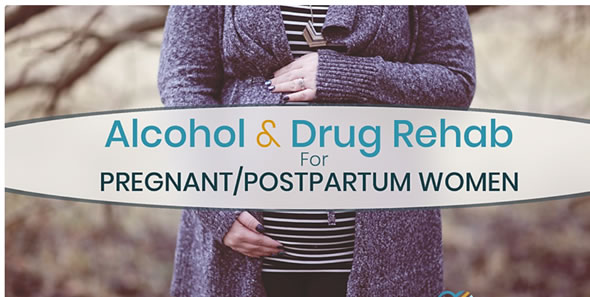 Pregnant mothers who struggle with alcohol or drug addiction carry a massive burden as they balance the desire to be healthy and the physical demand of dependency. In 2012, a national survey revealed that 5.9% of pregnant women use illicit drugs, and 8.5% drink alcohol. Addiction can lead to a multitude of challenges in pregnancy, delivery, and overall development. Many women worry that their options for rehabilitation are limited while pregnant or shortly after giving birth. With the help of unique treatment plans, however, there are plenty of options to help pregnant and postpartum women seeking recovery at all stages. SEE FULL DETAILS HERE |
|||||||||
A 2019 Guide to SMART Recovery What is SMART Recovery? SMART Recovery History How Does SMART Recovery Help Those Struggling with an Addiction? Effectiveness of SMART Recovery Self-management and recovery training (SMART) Recovery is a substance abuse rehabilitation program that serves as an alternative to traditional 12-step programs, such as Alcoholics Anonymous. 1 SMART Recovery is a program designed to help a person overcome self-defeating thinking in order to achieve long-term sobriety. Take an in-depth view into the program and how it has benefited those struggling with addiction. SEE MUCH MORE ON "A 2019 Guide to SMART Recovery" |
|||||||||
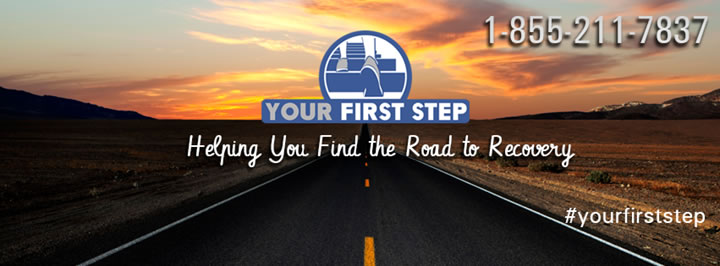 Your First Step was founded by a group of recovering addicts dedicated to giving others the opportunity for treatment. We connect others with the services they need to help them in their struggle against substance abuse whether that be a detox center, an inpatient or outpatient treatment program, mental health services or just an empathetic ear. As people in recovery ourselves, we have personally experienced the highs and lows of addiction and the recovery process and understand in a way that most others can’t the process of beating addiction. Through our experiences, we’ve learned how important it is to lend a hand to others in need, even when they don’t realize that they need it. Sometimes your first step isn’t admitting that you have a problem – it’s the tentative questions or thoughts that arise about the possibility of treatment. Figuring out where to start and what your options are can be confusing. We know, because we’ve been there. That’s why we’ve created Your First Step, to provide a resource for the men and women who don’t quite know where to begin when it comes to seeking treatment for addiction. For more information visit yourfirststep.org |
|||||||||
|
|||||||||
Study links daily use of high-strength cannabis to psychosis A study in the British medical journal The Lancet asserts that daily use of high-potency cannabis is “strongly linked to the risk of developing psychosis.” |
|||||||||
6 Hobbies to Help You Stay Sober If people recovering from substance abuse struggle to find meaning and purpose, they will also struggle to find success in recovery. Now that you’re sober, you’ll want need to fill your time with something other than drugs or alcohol. The more you can fill your life with meaning, the less likely you’ll be tempted to relapse. That’s why a new hobby can come in. Hobbies have many benefits, and not just for people in recovery. When you take on a new hobby you’ll also find a new outlet to: Unwind and relax How to Find a Hobby Make a list of activities you enjoyed before falling into substance abuse. An easy way to find a hobby is to rekindle a similar interest you had before drugs and alcohol took control. Ideas for Hobbies Exercise. Exercising is much more than going to the gym or running. Hop on a bike or a kayak, do some yoga, grab a friend for a game of tennis or golf, or pick up a solo sport like hiking or swimming. Exercising will not only occupy your time, but it will improve your well-being and release feel-good endorphins that support sobriety. People will find meaning in different ways, and people in recovery know just how important meaning can be when it comes to living a fulfilling life. Some will find that sense of purpose in religion, spirituality, physical activity or being creative. Finding a hobby that really excites you is also a wonderful way to find meaning and purpose in a life post-addiction. |
|||||||||
Life-changing companions: How to afford a service dog According to the ADA, service dogs are individually trained to do work or perform tasks for people with disabilities. Examples of such work or tasks include guiding people who are blind, alerting people who are deaf, pulling a wheelchair, alerting and protecting a person who is having a seizure, reminding a person with mental illness to take prescribed medications, calming a person with Post Traumatic Stress Disorder (PTSD) during an anxiety attack or performing other duties. Tahoma Guiry, chief marketing officer for K9s for Warriors says that what a service dog can do for veterans specifically is nothing short of astounding. “Some veterans will come in and will not have been to a store in a few years, have insomnia, panic attacks, depression, and when they come into our facility, you can see a transformation. They get more and more confident.” Service dogs differ from emotional support dogs in that a service dog is trained to perform a job that his or her owner cannot. On the other hand, an emotional support dog is a companion animal that provides therapeutic benefits. Support animals do not have to be specifically trained. Service dogs are protected by the Americans with Disabilities (ADA) Act, Fair Housing Act and the Air Carrier Access (ACA) Act. |
|||||||||
How To Camp With Your Dog |
|||||||||
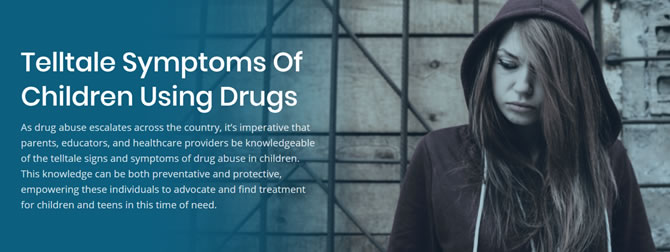 Adolescence is a time of great change. While some changing behaviors may be linked to natural mental or physical transitions experienced during this period, it’s imperative that parents and other adults do not dismiss these signs as only being related to puberty. Too many parents make this mistake, effectively cutting their child off from life-changing care for substance abuse. What you’ll find in this guide: Signs Of Drug Abuse - Paraphernalia of Drug Use - Why And Risk Factors - Prevention and Treatment PLEASE SEE COMPLETE DETAILS ON WEBSITE |
|||||||||
Enabling Addictions in Relationships - Examples & How to Find Help 15 Things You Need To Know About Loving Someone With An Addiction Complicated Grief: Healthy Approaches for Mourning the Loss of a Beloved, But Estranged Addict Stop Enabling Your Addicted Child Surviving the Secret Childhood Trauma of a Parent’s Drug Addiction |
|||||||||
 1-The Importance of Nutrition Education in Recovery from Anorexia A study published in the journal Nutricion Hospitalaria found that after a four- to six-month nutrition counseling program, participants with eating disorders had improved symptoms and more normalized eating patterns.1 In the beginning of the program, 34 percent of participants were eating from at least three food groups, while 70 percent were doing so after the program. Additionally, 19 percent of participants were eating fewer than four meals a day at the end of the program, compared to 70 percent at the program’s start. PLEEASE VIEW TAPESTRY WEBSITE |
|||||||||
Drug & Alcohol Addiction Support Groups There are hundreds of support groups full of compassionate members around the United States for you to consider. People who live in rural areas or prefer to not leave home to get help from peers have the option of joining many online communities that will be happy to welcome you as a member. There are general groups for any kind of addiction, for specific substance recoveries, for people who are religious or non-religious, and more, so no matter your circumstances and background, there is a community waiting to help you live a happy, healthy, sober life. Use these menus to jump directly to the groups of interest to you: Addiction Support Groups by Substance |
|||||||||
USA HEROIN DETOX CENTER PROCESS GUIDE NEEDLE EXCHANGES |
|||||||||
Grief and Addiction |
|||||||||
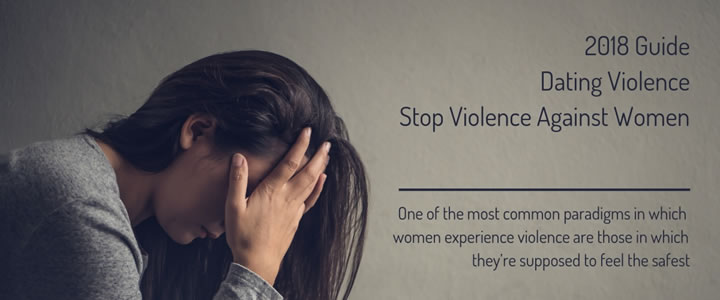 Dating Violence - Stop Violence Against Women - 2018 Guide t is a tragic, alarming, and utterly preventable cultural reality that women suffer increased rates of violence and harassment in practically every area of life. Antiquated gender roles, predatory societal figures, and a general lack of awareness all contribute to an ugly mosaic of mistreatment of women that has become astonishingly normalized and commonplace, even in the United States of 2018. This mistreatment permeates practically every environment, from our everyday social relationships to one of the most intimate, where women are supposed to feel the safest—their romantic relationships. PLEASE SEE COMPLETE WEBSITE |
|||||||||
We here at JourneyPure Nashville believe in a more supportive way to transition people back into their daily lives. Prior to discharge, our clients are assigned a personal recovery coach. Working with the patient, the personal recovery coach develops an individualized plan for long-term sobriety. The plan is then entered into our JourneyPure Coaching™ app so that patients have access to the recovery support they need, whenever and wherever. Knowing that ongoing recovery support is just a call or a click away can be a mighty contributor to alleviating those feelings of confusion and loneliness. |
|||||||||
 As of July 1, 2018, approximately 2,212 U.S. college and university campuses are now entirely smoke-free, according data provided by the American Nonsmokers’ Rights Foundation. A majority of these institutions (1,853 in total) are also completely tobacco free, and 1,790 of them report that they have eliminated the use of e-cigarettes, too. This is obviously great news for those who are trying to stop this potentially deadly behavior, but why is the issue of smoking among college students so important? VIEW THE FOLLOWING SUBJECTSCollege Students and Smoking: The Concern Reasons Why College Students Smoke Smoking Risk Factors in a College Setting Effects of Smoking (Both Well-Known and Relatively Unknown) The Fast Impact of Quitting Smoking Options to Help You Quit ON THIS GREAT WEBSITE |
|||||||||
Why The Disabled Are At A Higher Risk For Substance Abuse And How To Help In Recovery People living with a physical or intellectual disability are not immune from substance use disorders during their lifetime. It can be difficult for someone with a disability to get the help they need. The disability they have, may have an enormous effect on whether they get treatment or not. It usually comes down to a family member or a loved one that has the ability to get them into the right treatment . When a disabled individual becomes addicted, it is important to find help geared towards the disability for success in the recovery process. Having compassion and understanding of their disability is also very important in helping them through overcoming addiction. |
|||||||||
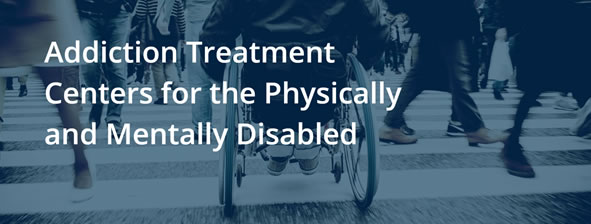 SEE WEBSITE FOR COMPLETE DETAILS Substance abuse treatment for a disabled individual must be sensitive to each person’s unique health, medical, and social needs. In order for treatment to be effective, rehabilitation programs must be accessible, compassionate, and skilled at treating both the disability and substance use disorder. |
|||||||||
 Insurance Guide Content Overview According to a report supported by the National Institute on Alcohol Abuse and Alcoholism, women are more likely than men to face multiple barriers to accessing substance abuse treatment and are less likely to seek treatment. Women typically consume less alcohol, drink alcohol less frequently, and are less likely to develop alcohol-related problems than men. Similarly, women are less likely than men to use illicit drugs and to develop drug-related problems. PLEASE SEE THIS VERY INFORMATIVE WEBSITE Women's Health Insurance Guide for Addiction Treatment |
|||||||||
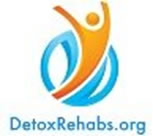  SEE WEBSITE FOR MORE GREAT RESOURCES Welcome to DetoxRehabs.org. We proudly offer an extensive list of detox centers, rehab programs and treatment facilities to choose from. Take the time to view the list of resources throughout the country, which is updated regularly. Also, whether you don’t find exactly what you’re looking for, or you need some other treatment options, we have rehabilitation consultants standing by to assist you. Simply fill out the contact form or call our toll-free number now to speak with a live person. |
|||||||||
Best Luxury Drug & Alcohol Rehab Center in California: Individualized Addiction Treatment SEE WEBSITE Monarch Shores is a licensed and certified luxury rehab center in California, located right off the Pacific Coastal Highway in Orange County. We specialize in providing individualized treatment programs for every unique patient who comes through our doors. Our physician-led multidisciplinary treatment team provides an integrated, holistic approach to treatment that creates long-term effective sobriety. These addiction treatment services include personalized therapy that incorporates cognitive behavioral therapy (CBT), 12-step addiction treatment, non 12-step treatment, dual diagnosis, SMART Recovery, and holistic modalities such as acupuncture, yoga, meditation, fitness training, recreational outings and much more. Our world-class therapists practice over 20 different forms of therapy techniques to meet your individual needs. As a premier luxury drug rehab and alcohol treatment center, we use an approach that incorporates a comfortable, high-end, environment, so you can focus on your personal goals and therapeutic challenges in a relaxed setting. We offer a compassionate team of knowledgeable professionals who treat every client with the utmost dignity and respect. Call today and see why so many others have chosen Monarch Shores as their option for drug rehab in California. |
|||||||||
 Finding Treatment Can be Easier with Our Help The number of drug rehab centers in the United States has grown to staggering numbers. Because of this, we have compiled a searchable directory of rehab centers on our website. Organized by state, this list will simplify the process of finding help. Treatment Centers By State |
|||||||||
| Alabama | Alaska | Arizona | Arkansas | California | Colorado | Connecticut | Delaware | District of Columbia | Florida |
| Georgia | Guam | Hawaii | Idaho | Illinois | Indiana | Iowa | Kansas | Kentucky | Louisiana |
| Maine | Mariana Islands | Maryland | Massachusetts | Michigan | Micronesia | Minnesota | Mississippi | Missouri | Montana |
| Nebraska | Nevada | New Hampshire | New Jersey | New Mexico | New York | North Carolina | North Dakota | Ohio | Oklahoma |
| Oregon | Palau | Pennsylvania | Puerto Rico | Rhode Island | South Carolina | South Dakota | Tennessee | Texas | Utah |
| Vermont | Virgin Islands | Virginia | Washington | West Virginia | Wisconsin | Wyoming | |||
| TREATMENT CENTERS Call 1-800-610-4673 Our Treatment Consultants are available 24/7 PLEASE VIEW WEBSITE FOR MUCH MORE INFORMATION |
|||||||||
 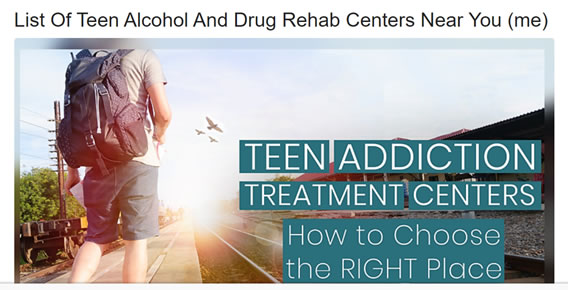 PLEASE SEE A GREAT LIST OF TEEN ADDICTION TREATMENT CENTERS NEAR YOU WEBSITE |
|||||||||
Substance Abuse Among Lawyers Table of contents |
|||||||||
Suicidal Thoughts and Alcohol Abuse: Tackling Both Problems Head On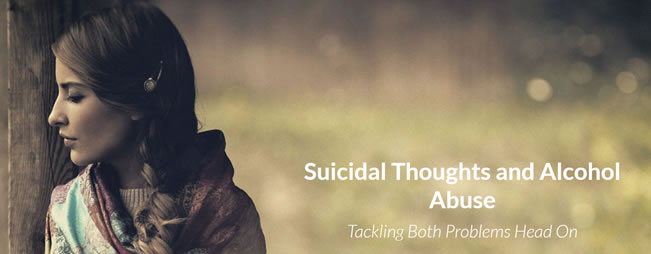 Whether it’s at your sibling’s wedding or happy hour at the local pub, drinking is a pretty common pastime in American life. When handled responsibly, it can be a way to relax in social situations, celebrate with loved ones, and even decompress after a long day at work. When it’s abused, though, it can be dangerous — drinking can change the way you think and see the world, and it’s not always for the better. People abuse alcohol for all kinds of reasons — financial woes, relationship problems, and trouble at work all tend to be big contributors — and in many different ways. Abuse isn’t always synonymous with alcoholism; even on the weekends is considered abuse. But drinking isn’t the best way to cope with problems, and can even make them appear so massive that ending it all seems like the only way out. In fact, alcohol is a factor in over a quarter of all suicides in the United States and more than a third of suicide victims used alcohol just prior to death. Coping with an alcohol abuse problem and the suicidal tendencies that sometimes accompany it is a slippery slope to say the least. This guide will help to lead the way to cleaner, happier living by outlining the relationship between alcohol abuse and suicidal thoughts and how to overcome both. Keep in mind that while this guide isn’t a substitute for professional help, it can certainly be a positive first step on your road to recovery MUCH MORE ON THIS SUBJECT, PLEASE VIEW WEBSITE |
|||||||||
Relationships are hard work. If they were easy, every relationship would last forever. Adding addiction and infidelity makes the outcome less predictable, and more challenging. All treatment programs focus on detoxification along with repairing mental and social health, and guide you in how and when to make amends with yourself and others. However, this process can be especially difficult if infidelity is involved. The key ingredients individuals bring to a good relationship include patience, respect, good communication and lots of effort. It makes sense that this is true of relationships in both good times and bad. But once you have disrespected your partner by being unfaithful, you also need trust and forgiveness. Getting a relationship back on track after infidelity starts with pursuing both through effective communication with your partner. Regardless of where your relationship stands, remember that if recovery is possible, so is saving the relationship. Focus on maintaining your recovery first. You can't have a healthy relationship without having a healthy you. Focus on your relationship when both you and your partner are ready, and realize it will likely take him or her more time. Communicating and taking it slowly can ultimately help you both repair and rebuild. - Photo Credit: Pixabay.com |
|||||||||
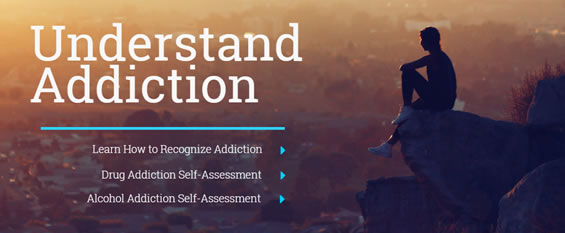 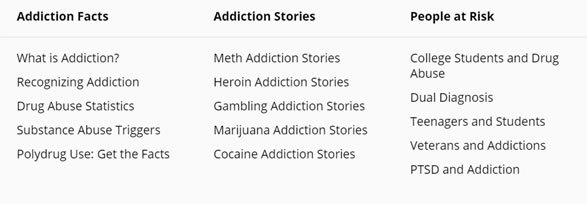 SO MANY GREAT RESOURCES - PLEASE VIEW WEBSITE HERE |
|||||||||
Recovering from Addiction: The Importance of Support Smoking affects the central nervous system, reinforcing drug-taking behavior. Support is needed in order to spread awareness and education about smoking’s true effects in order to keep the disease of addiction in remission. |
|||||||||
 UNITED KINGDOM CALL: 0800 111 4108 MOBILE: 0345 222 3509 INTERNATIONAL: +44 345 2223509 Providing impartial and independent advice to those suffering from alcohol related addiction At Rehab 4 Alcoholism we are well known around the United Kingdom for our hard work and dedication in defeating alcoholism. Just so you know our advice is 100% free and impartial. We are independent from the rehabilitation industry and we intend to remain independent. Our alcohol rehabilitation services are available to people suffering from varying degrees of alcohol addiction. Invariably this includes treatment for so-called chronic alcoholism but also for sufferers exhibiting mild forms of alcoholism. Left unchecked alcoholism leads to serious health complications including brain damage and alcohol-related liver disease. Alcoholism left untreated inflicts lasting wounds on relationships including family life, professional life and social life. Rehab 4 Alcoholism offers an industry-leading assessment with one of our experienced admissions officers conducted in complete confidence. If you are suffering or you suspect a loved one is suffering from an alcohol addiction call 0800 111 4108. Our admissions team helps you through assessments and outlines potential treatment options available. Your needs are our main concern when considering treatment options. Our team makes sure your recovery is successful. Many of our team have been in your situation themselves. Rehab 4 Alcoholism offers free support and help to people who suffer with alcohol and drug addiction. Rehab 4 Addiction offers free telephone assistance and also maintains useful resources and guides on its website. Website: REHAB 4 ALCOHOLISM |
|||||||||
| Resources to Combat Porn: Men and Women Date Created: March 12, 2018 • cpyu.org • fightthenewdrug.org • harvestusa.org/category/pornography/ • barna.com/research/porn-in-the-digital-age-new-research-reveals-10-trends/ • xxxchurch.com • www.culturereframed.org https://www.westwoodchurch.bc.ca/resources-to-combat-porn-men-and-women/ Your eyes are the windows of your soul. What you repeatedly expose yourself to will influence your imagination, your actions, and finally your character. There are three things you need to know about pornography. (1) It’s addictive. Family counselor Gail Hoone said, “Pornography is more addictive than drugs, and thanks to the First Amendment, it’s getting bigger every day.” (2) It’s selfish. It trains you to see people as playthings to be played with, and all for one purpose —self-gratification. Intimacy, responsibility, and commitment are not even in the picture (or frame). (3) It’s shaming. Unlike the lepers in the Bible, pornography doesn’t ring a bell and cry, “Unclean! Unclean!” Yet when you fall under its control, you find yourself responding to it in ways that leave you feeling cheapened and unclean. But there’s good news. Every leper who came to Jesus was cleansed; and through His blood you can be cleansed too! Furthermore, you can be empowered by His Spirit to cast down every imagination, and take every thought captive (2 Corinthians 10:5). (From the devotional, Word for You Today) |
|||||||||
My Pilgrimage Online Small Groups |
|||||||||
SMALL GROUPS ONLINE ABOUT X3GROUPS These online small groups are the perfect place to find a community of people who experience the same challenges and struggles that you do. Whether you’re a man, woman, pastor, or student struggling against pornography and sexual temptation, the wife of a husband who is, or someone dealing with same-sex attraction, there’s an X3group available for you. These anonymous, online groups meet weekly via video chat and also provide you access to our private social media tool so you can stay in touch and encourage one another throughout the week ABOUT MY PILGRIMAGE You’ve tried everything to overcome your struggles with pornography or sexual addiction, but nothing’s worked. Maybe it’s time to rethink everything you thought you knew about it! My Pilgrimage is a groundbreaking way of thinking about pornography that changes you from the inside out, and this small group provides a healthy community for you to change within. These anonymous, online groups meet weekly via video chat and also provide you access to our private social media tool so you can stay in touch and encourage one another throughout the week. ABOUT RECOVER Where can women go to find support, help, and healing in the face of sexual betrayal? Gather together with other women like you through this special small group. It’s made up entirely of women who are enduring the same trials as you – and only those women. These anonymous, online groups meet weekly via video chat and also provide you access to our private social media tool so you can stay in touch and encourage one another throughout the week SEE SMALL GROUPS ONLINE |
|||||||||
Drug Treatment Beds Across B.C. See More Detail Such: As Min. cost/month - Program Length Wait Time? - 12 Step - Absitinence Based - Total Beds ...............Name of Program.........Phone # ........Detox or Rehab ......Private or Public...... Adult or Youth |
|||||||||
 |
|||||||||
 DRUG REHAB CONNECTIONS  JOIN OUR GROWING COMMUNITY WHO DOES ADDICTION HAPPEN TO? It doesn't matter what you look like or where you come from, addiction can happen to anyone. There are many misconceptions about people who are drug addicts or alcoholics. Our mission is to help you or your loved one find answers and support on what steps you can take to overcome your addiction. Millions of Americans struggle with this disease and we are here to help you understand how an addiction can form and from there guide you to proper treatment and rehab. Help is out there and it is available to you. There are many treatment options, from inpatient rehab to outpatient counseling and support groups. Just because a problem has developed doesn’t mean it has to stay a problem. No matter what your background is, we view you as a person and not just a drug addict. Know that you are loved and cared for, and we will do whatever it takes to help. |
|||||||||
|
|||||||||








